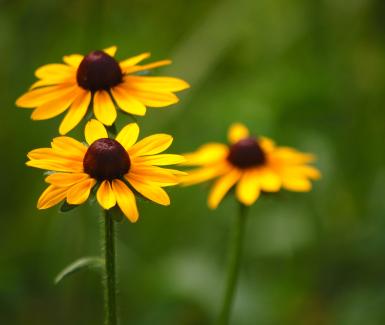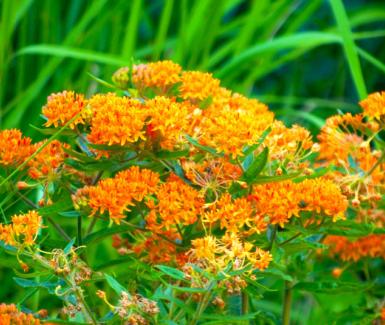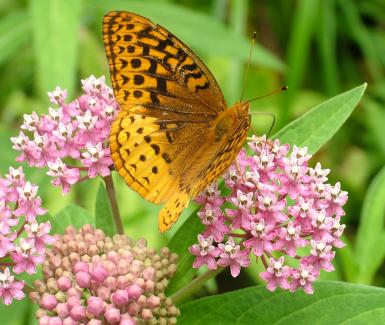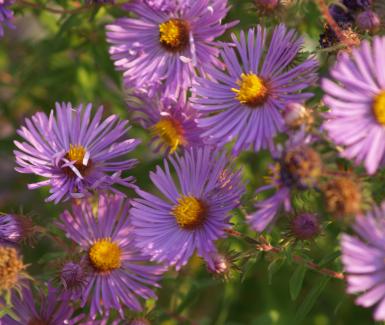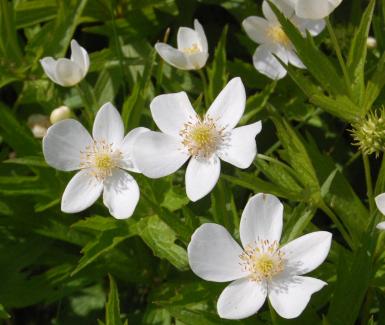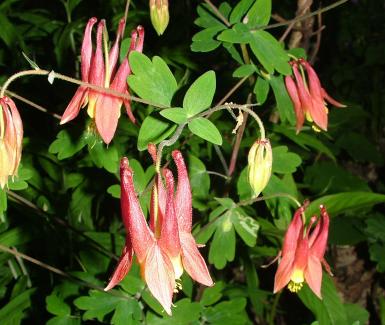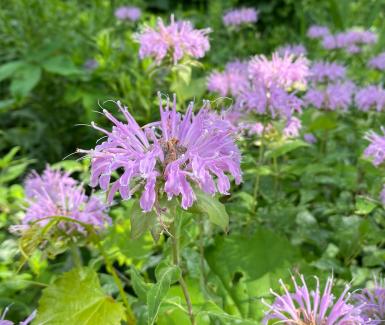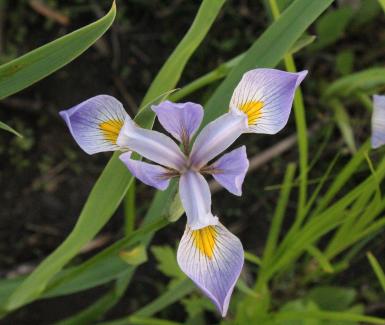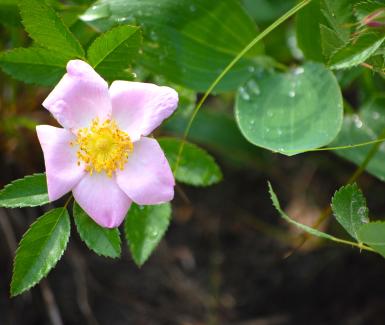Michigan native plants are, unsurprisingly, plants that have existed in Michigan for hundreds or even thousands of years. Because they are native, they are well adapted to Michigan’s unique soils and variable climate. Many native plants have deep roots that allow them to survive cold winters, hot summers, and dry seasons.
Native plants
The benefits of native plants
Because native plants are well-adapted to local growing conditions, maintaining a native garden looks different than maintaining a lawn. They don't require chemical fertilizers and don't need to be mowed, making their maintenance needs gentler on the planet.
Above ground, native plants offer a lot of habitat for birds and insects. Some creatures depend on specific species of plants to survive, like monarch butterflies and milkweed. Planting native plants in an area promotes biodiversity, which leads to a healthier ecosystem.
Native plants with deep roots are particularly useful near waterways, as their extensive root systems help hold soil in place This stabilizes stream banks and keeps excess sediment from getting into the water.
Native plants help fight climate change in several ways. Through photosynthesis, they take in carbon from the air, storing it and using it to grow. Their roots filter rainwater, creating paths for water to percolate into the soil, preventing pollutants from entering our waterways, and lowering the risk of flooding. In these ways, native plants help provide the clean air and water that are essential for maintaining a healthy ecosystem.
Native Plants provide interest in every season! Ephemerals like Trillium or Bloodroot provide a splash of much-needed color in Spring. In Summer, native grasses and flowers are in full bloom, teeming with life and activity. Fall is when many plants present a beautiful array of auburn, bronze, and gold. These colors, combined with unique textures of drying seed heads, add an element of whimsy to any garden.
Winter can be the most interesting if plants are left standing! Freshly fallen snow may blanket the dried foliage of plants like Purple Coneflower, and grasses like Little Bluestem or Prairie Dropseed will sprout above an otherwise blank landscape. Each native plant can bring something beautiful and unique to your garden if you let them be.

Using native plants to restore the watershed
Because of their many benefits, native plants are ideal for many nature-based restoration projects. Plaster Creek Stewards only uses native plants in our rainscaping and other projects. Using native plants not only helps protect our clean water, it also creates healthy local ecosystems.

Growing native plants
Each season Plaster Creek Stewards gathers seeds from over 500 species of native Michigan plants. These seeds are smart and will not germinate until they have sat through a winter season. Some seeds, especially berries, need to be digested to germinate. We mimic the natural processes of dormancy by putting seeds in the fridge, shaking them through a blender, or washing them in acid. When spring arrives, the seeds are laid out for germination and transplanted into larger pots and flats as they grow. This propagation is all done in greenhouses on Calvin’s campus. Here, the plants grow and stay until they are ready to be planted in watershed restoration projects. Our greenhouse facility includes an outdoor nursery covered in shade cloth, one heated greenhouse, and two cold frame greenhouses. These greenhouses are a hub for student and volunteer activity throughout the growing season as materials, tools, and plants are staged here for restoration work.
To learn more about finding the right plants for your restoration project, check out our rain gardens page.
Trees
Planting trees is one of the most beneficial things we can do to heal and support our watershed. From roots to leaves, trees support a healthier, more stable, cooler, and cleaner creek. For more in-depth information about the benefits of trees, check out TreeCanopyBMP.org.
The benefits of trees
Like other Michigan native plants, trees have extensive root networks that break up the soil and create pathways for rainwater to soak into the ground. Once it enters the ground, water then takes one of these two paths:
- Flowing through the tree: Water that is absorbed by a tree’s roots flows inside the tree up to the leaves. The water that evaporates from the leaves is cool and clean, and it rejoins the water cycle as a vapor. This process ensures that less polluted water drains into local waterways.
- Becoming groundwater: Some water traces the channels of tree roots downward into the soil. The soil then acts like a filter for the water, slowing it down, cooling it, and cleaning out some of its pollutants. Eventually, this water will make its way through the ground and join a stream as groundwater.
Another way trees benefit our watershed is with the power of their leaves. A tree’s leaves and stems, altogether called the tree’s “canopy,” catch rainwater as it falls onto the tree. This rainwater either drips and trickles down the tree to reach the roots, or it stays on the leaves and evaporates back into the air. In each of these scenarios, the tree reduces the amount of runoff rushing into nearby streams, limiting water pollution and flooding.
In a similar way to how urban trees block the sun’s heat with their shade, trees planted along a stream can help shade and protect the water. Due to development, many trees have been removed from along stream banks. Streams without trees are exposed to the sun, which warms the water and makes it unlivable for some fish and other organisms. In addition to providing habitat for birds, insects, and other land creatures, trees planted near a waterway enable habitat for aquatic creatures by maintaining a livable water temperature.

Where to plant a tree
A tree can benefit the environment around it regardless of where it's planted. It can help cool the area in the summer, capture carbon from the air, and provide natural green space that has proven important for human wellbeing.
There are many areas where you can plant trees. For properties next to the creek, trees can be added as part of a protective buffer between a creek and the rest of the landscape. Trees in depressed or dug-out areas have space to mature and access to a consistent water supply (Make sure to choose a species that likes wet, soggy ground). Because lawn grass has very short, shallow roots, lawns don’t soak up much water – they create runoff instead. Plant a tree in your yard or parkway so its deep roots can enable more water to soak into the ground.
Street trees planted in the parkways of urban yards have to meet certain requirements for maintaining visibility and accessibility of the street and sidewalk, but it’s worth it to add shade and beauty to urban areas. Contact Friends of Grand Rapids Parks to apply for a free street tree.







